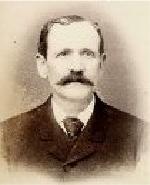Deadwood Days of '76 Museum Update
Days of ’76 Museum needs to raise an additional $500,000 to $600,000 to complete its exhibits showcasing decades of local history and memorabilia from the Days of ’76 event.
It has enough to open the $5.3 million project next summer, no matter what, but may have to hold off on some of the exhibits displays until fundraising is complete, museum director Deborah Gangloff and board president Jon Mattson said.
Of the remaining need, $350,000 is to complete a contract for exhibit installation with Condit Exhibits of Denver, which organized the collection into displays.
The balance of the need is for landscaping, furniture and fixtures.
“I’ve been with the rodeo community a long, long time, and it’s something that we’ve never had before,” Mattson said of the museum. “This is going to be just a wonderful attraction not only for Deadwood but also the entire Black Hills . But we need help."
For more information or to donate, call the museum at 605-578-1657 or fill out a donor form online at by selecting on the following web site image.
~
~~~~~~~~~~~ Also from Rapid City Journal ~~~~~~~~~
~~~~~~~~~~~ Also from Rapid City Journal ~~~~~~~~~
Days of ’76 Museum, under construction, raises money to complete exhibits
·
 |
| Front of Deadwood Days of '76 Museum |
DEADWOOD -- When some tourists hear about the Days of ’76, they think 1776 and the events of 235 years ago last weekend, when the U.S.
The new Days of ’76 Museum building, under construction at the city’s north entrance, recalls the town’s pioneer days as well as the Days of ’76 event and later rodeo that began in 1923 to celebrate those early times. The building, now framed in, is changing the small city’s skyline and is expected to open next June. It replaces an unheated pole barn that formerly housed the museum’s meandering collection of stagecoaches, clothing, photographs, Days relics, taxidermy, furniture, firearms and other items.
“When we started planning for this museum, we had eight decades of history, and none of it was organized,” museum director Deborah Gangloff said. “You could look at the stuff and see what it was, but it didn’t make sense.” When the 32,000-square-foot museum opens, the collection will go from a jumbled display that was closed all winter to an organized, cohesive story that has been professionally curated and properly safeguarded from the elements. There are four main collections: wagons and vehicles, clothing, rodeo and Deadwood collector Don Clowser’s Old West art and artifacts. Clowser, who died in 2004, had sold the collection to the city, which entrusted it to the museum, where it has been displayed since 1990.
A $3 million gift from the city in 2004 began the drive to build the new museum. The museum board hired a conservator to assess the collection, and it was clear the pole barn wasn’t adequate. The board hired Gangloff, who had overseen the restoration of the Historic Adams House, first as a consultant and now as director. Now, the collection has been organized and is being stored on site in a different building, awaiting its new home. “It’s a really good collection,” Gangloff said. “It’s uneven, but it has some things that are spectacular.”
The two-story museum will house the carriage collection on the ground floor, along with a programming room for community events. The second floor will include the displays of art, rodeo history, costumes, firearms and artifacts, along with a research library for archives and a gift shop.
The Deadwood Days of ’76 event was the start an economic development tool to attract tourists, Gangloff said. Some locals thought it was a bad idea: Why look back on the city’s lawless days when trying to promote Deadwood as a modern home to industry? But the event, modeled after Wild West shows and featuring costumes, a parade, and feats of shooting and riding, proved a success. It evolved into today’s popular rodeo, planned this year from July 26-30. This museum, right at the rodeo grounds, should be another draw for visitors and another way to expand Deadwood’s economy, Gangloff said. “It serves as an anchor to this part of town,” she said. “It gives people something else, when they’re coming into town, that says history is important here.”
The museum building is owned by the City of Deadwood.






1 comments:
Wanting to contact Lois Pringle. I was born in Ottumwa Iowa on 3/14/62. Contact me at stone.lori@yahoo.com
Post a Comment